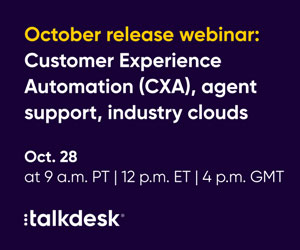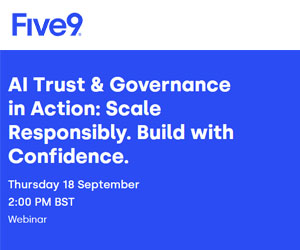Do you know the difference between ‘intraday management’ and an ‘intraday plan’?
Quite simply, ‘intraday management’ refers to the process of real-time teams reviewing call volumes and agent stats in real time – keeping a close eye on what was planned vs. what’s happening. An ‘intraday plan’ is then needed for when things go wrong, to help get your team back on track.
To find out how to manage an intraday plan – proactively and reactively – for the best possible outcomes, our Editor, Megan Jones, spoke to Dan Smitley, Founder of 2:Three Consulting, Keith Stapleton, Director at Select Planning Ltd, and Irina Mateeva, Founder of RightWFM, for their expert advice.
Here’s what they said…
1. Start Each Day With a Quick Performance Meeting
Start each day with a quick meeting with your team leaders and WFM teams to discuss the performance from the previous day, as well as the expectations and plan for the current day.

This helps to build rapport with your stakeholder groups, as Irina Mateeva explains:
“This is a good way to get additional information from operations that can help you make changes accordingly if needed. Throughout the day, you can also send quick performance dashboards to these groups to let them know where you stand.”
2. Make Sure Your Unit of Currency Is the One the End User Needs
Make sure your unit of currency is the one the end user needs and uses, as Keith Stapleton highlights:
“To schedule the day we Planners break it down into 30-minute intervals and aim to balance the demand requirements with available staff. We then calculate if we will hit service level as a result.
“In Operations, it’s seen differently as ‘will we have enough people and what is our over and under in heads?‘
“These are driven by the same thing but result in different reactions. To help overcome this, make sure you tell an Operational decision-maker if they can or need to redeploy staff and how many, as this is ultimately what they need to know!”
3. Introduce an Action–Reaction Strategy Matrix
Another strategy is to implement an action–reaction strategy matrix and socialize it with the different stakeholder groups, as Irina expands:
“A matrix introduces different actions based on different circumstances. For example, if the Service Level is consistently above X percent, you can suggest time for training, coaching, or meetings to your team leads.”
You could also use scheduling playbooks to manage spikes in demand. For advice on this, read our article: Using Scheduling Playbooks to Manage Spikes in Service Demand
4. Swap Finger-Pointing Assumptions for a More Supportive Approach
How you communicate is almost as important as what you communicate, so when there are problems, always go in with a supportive approach – instead of finger-pointing, as Dan Smitley explains:
“Unfortunately, many RTA (Real Time Adherence) teams get known as ‘the RAT team’ – with a reputation for ratting out agents and Ops leaders when things don’t go to plan. This is a communication issue!
“When agents constantly feel that the RTA team is swooping in and finger-pointing, the relationship quickly becomes toxic.”
To turn this around, try taking a more inquisitive and supportive approach with questions such as:
- “Hey, what’s going on?”
- “Help me understand why this is important right now.”
- “Is it possible that we can delay this?”
- “Is it possible that we can collaborate to find a better time for this?”
- “We planned on X, but now it’s different than we expected, how can we work together to correct it?”
As part of the Real Time Team, it’s also all too easy to assume you know exactly what’s happening, as Dan continues:
“Almost villainizing agents doesn’t change the fact that your after-call work time (ACW) is high right now. So don’t assume you know what’s going on. Collaborate, go in with curiosity and, most importantly, go in with kindness!
“If you’re hostile all the time, you’re going to burn bridges and drive an us vs. them mindset, which inevitably will remove so much of the value your team has to offer.”
For advice on improving your communication, read our article: The 7 Cs of Effective Communication
5. Identify the Most Critical Parts of the Day to Focus on First
Service levels are not 100% for many reasons, so attempting to schedule or manage staff to meet the SLA every period, chasing green, is not a realistic expectation, nor will it be how your SLA target was intended or contracted, as Keith continues:

“SLAs are usually set at day end, so a good start to any day is comforting to Operational Management, but the period of higher demand impacts the day-end result the most, and that is usually not at the start of the day.
“It’s important to identify the most critical parts of the day so service management is focused on those periods first and foremost.
“Rather than communicating the intraday SLAs, show the SLA as a rolling achievement, where you should be at any point to achieve the day’s prediction, assuming staffing and demand run to plan, or close to.”
Top Tip! Most WFM systems have a feature on how to achieve the SLA, so make sure yours is correct, as that way the system will help you schedule appropriately – although still expect to have to explain the unders.
6. Get Information From Your Agents on the Day Itself
It’s equally important to work closely with your frontline agents, as Irina explains:
“Analyse trends and get information from your agents on the day itself, which you can then use to provide feedback to improve on planning and forecasting team deliverables.”
7. Always Make Time to Ask “Why Did That Work?”
Whilst a lot of focus inevitably goes into exploring the pain of what happened when SLAs are missed, the greatest opportunity comes when the SLA is met at day-end, as Keith adds:
“When things go well, do you simply move on to the next day? (If you do, I’m not blaming you, as most organizations have limited available time or focus for review.) Or do you ask, “why did that work?”
“If you can understand and share why overall success can contain limited failure, you’ll make the right decisions during delivery, rather than knee-jerk ones that may not be as successful or consistent. At times we’re lucky, but can you afford to put your trust in Lady Luck’s hands?”
Where Do Real-Time Insights Come From?
To capture real-time insights, your telephony platform must be able to feed real-time states of the agent (in ACW, Talk Time, etc…) into your WFM system, as Dan explains:

“You need a WFM platform and a telephony platform that can combine this data in a meaningful way – to highlight when everything’s happening exactly like you thought, or when things aren’t going to plan.
“This is where the legacy players in the WFM space really come into their own with their strengths and experience in voice.
“For example, NICE, Alvaria, and Calabrio all do it well – compared to some of the newer players in the market who don’t offer this feature at all, as it’s not as relevant to the non-voice / digital channels they predominantly focus on in a ticketing environment.”
We have a number of other great articles on making the most of your contact centre planning. To find out more, read these next:
- 12 Top Tips for Intraday Management in the Contact Centre
- Top Tips for Dealing With Volatility
- Planning for Schedule Variance
Author: Megan Jones
Reviewed by: Xander Freeman
Published On: 5th Aug 2024 - Last modified: 13th Aug 2025
Read more about - Workforce Planning, Calabrio, Dan Smitley, Intraday, Irina Mateeva, Keith Stapleton, NiCE, Real-Time Management, Scheduling, Staffing, Top Story, Workforce Management (WFM), Workforce Planning







































